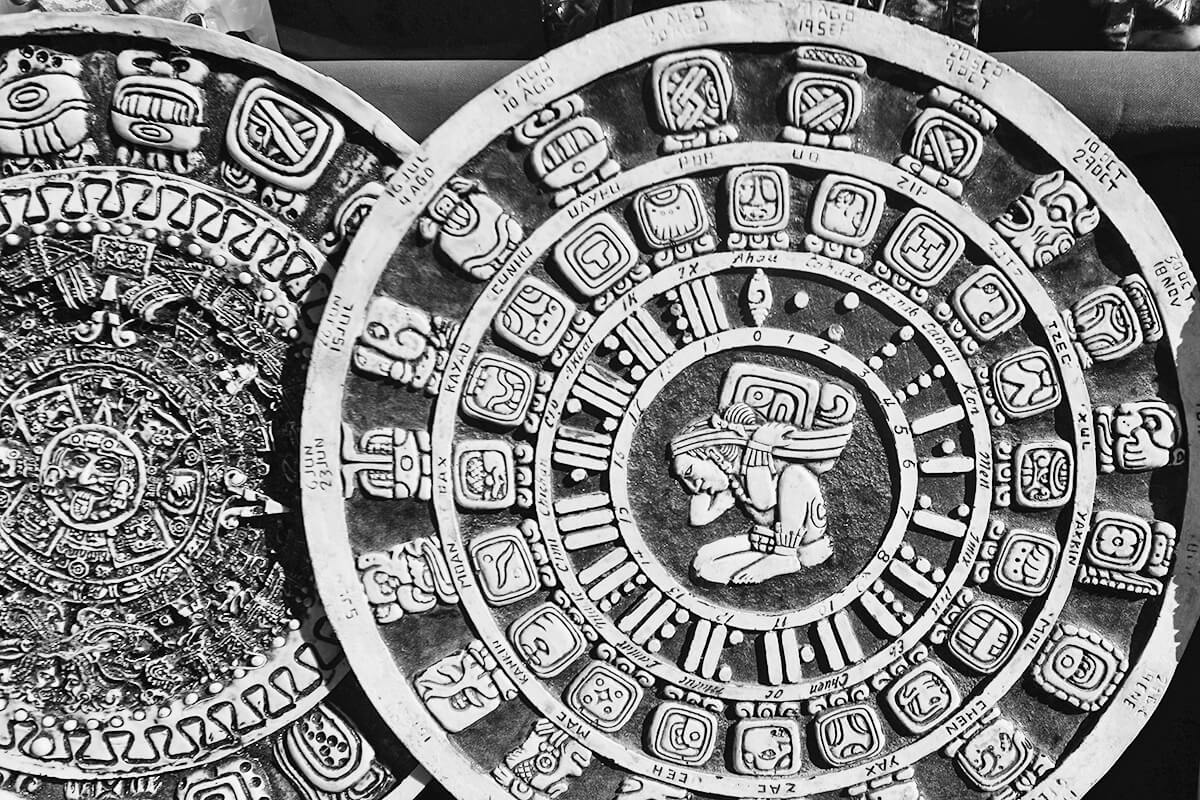
The Maya Calendar Isn’t Entirely Maya
While historians refer to this ancient Mesomaerican calendar as “Mayan,” parts of the calendar likely originated with the Olmecs, an ancient civilization in southern Mexico that thrived from 1,600 BCE to 350 BCE (or perhaps even some older, pre-Olmec society). Before the infamous Spanish conquistador Hernán Cortés arrived in the New World in 1519, every Mesoamerican society used some form of this ancient calendar, including the Aztecs, Zapotecs, and of course, the Maya, who improved upon this original calendar greatly. Although different societies had different names for aspects of the calendar, the Mayan vocabulary is what’s most commonly used.

The Maya Calendar Is Actually Made Up of Three Calendars
There are aspects of the Maya calendar that are fundamentally different from our own. In the Gregorian calendar, we consider days and months to be cyclical, in that they repeat over and over, but years are considered linear — it will never be the year 2022 again, for example. Mesoamerican cultures thought differently; in the Maya calendar, all time is cyclical, and years recur every 52 years.
It helps to understand that the Maya calendar is actually many calendars. First, there’s the calendar round, which itself is made of two calendars. There’s the Sacred Round, which lasts 260 days. Theories suggest that it represents the human gestation period or possibly the Maya agricultural cycle. Then, there’s the haab, or Solar Round, a 365-day calendar. Together, each day using this two-calendar system has four designations — a day number and day name from the Sacred Round and a day number and month name from the Solar Round, which creates names like 3 Manik 14 Pohp or 4 Ahau 8 Cumku. Every 52 years, or 18,980 days, these names repeat.
How do you keep track of time longer than 52 years? Well, that’s where the third calendar — the Long Count calendar — comes into play. In this calendar, a day is known as a k’in, 20 k’in make a uinal, and 18 uinal make a tun (which is about a year). After that, 20 tun make a k’atun, and 20 k’atun make a b’ak’tun — a unit of time nearly 400 years long.

The Long Count Calendar Uses Five Numbers to Mark a Day
While the Maya used all three calendars concurrently, the Long Count calendar is the one that’s usually talked about when people are discussing the “Maya calendar,” and today, scholars use five Arabic numerals when talking about dates associated with this calendar (the Maya used hieroglyphs). For example, on our calendar, U.S. Independence Day is 7/4/1776 (or 4/7/1776 in many other countries). The Maya Long Count calendar marks that day as 12.8.0.1.13. This number includes the b’ak’tun, k’atun, tun, winal, and k’in, from left to right. So how do we read these numbers? To figure that out we have to go back to what the Maya believed to be the beginning of creation (which isn’t as far back as you might think).
More Interesting Reads

The Long Count Calendar Starts on August 11, 3114 BCE
The Maya believed a cycle of creation lasted 13 b’ak’tun. When retroactively calculated, that means the Long Count calendar began on August 11, 3114 BCE. The 19th day (or k’in) of this calendar (August 30, 3114 BCE) would look like 0.0.0.0.19 before turning over to 0.0.0.1.0, and so on using the units mentioned above. July 4, 1776, or 12.8.0.1.13, is thus day 13 of the first uinal of the tun zero of the eighth k’atun and the 12th b’ak’tun.
This system continued counting the days for thousands of years until the Long Count calendar approached its 13th b’ak’tun, the moment Mayas believed creation started anew. That created some far-fetched doomsday predictions on the part of some more creative prognosticators — though notably not the Maya themselves.

December 21, 2012 Was Not Doomsday According to the Maya
On December 21, 2012, the Long Count calendar clicked over to the 13th b’ak’tun and finished what’s known as a “Grand Cycle,” which lasts 5,125.366 years. Although the Mayas believed this to be an important day, they simply assumed that a new “Grand Cycle” would begin on December 22, 2012. In other words, there is absolutely no evidence of apocalyptic Mesoamerican folklore surrounding this day.
But in the months leading up to this date, doomsayers nonetheless believed natural disasters or a colliding Planet X would end all life as we know it. Of course, none of this happened. In fact, for most of the 6 million Maya still living today, December 21, 2012, was just like any other day — perhaps even better because it was a Friday.

The Maya Calendar Was Deciphered by a German Librarian
No one knew how to understand the complex system of Maya timekeeping for hundreds of years — most Mayan cities were abandoned by about 900 CE, for reasons historians are still debating, and the civilization went into a mysterious decline. But in the late 19th century, things began to change when Ernst Forstemann, a librarian at the Royal Library in Dresden, Germany, started poring over one of the most important documents of pre-Columbian civilization. Known as the Dresden Codex, it’s one of the oldest surviving books written in the Americas, dating to around 1200 CE — and it’s filled with Maya hieroglyphics.
Through his analysis, Forstemann discovered the inner workings of the three Maya calendars, and that the date 4 Ahau 8 Cumku, as found in the Calendar Round, was actually the start for the Long Count calendar. Over the next century, scholars continued deciphering the intricate calendar and language of the Maya, revealing a complex people of great cultural and scientific sophistication.











